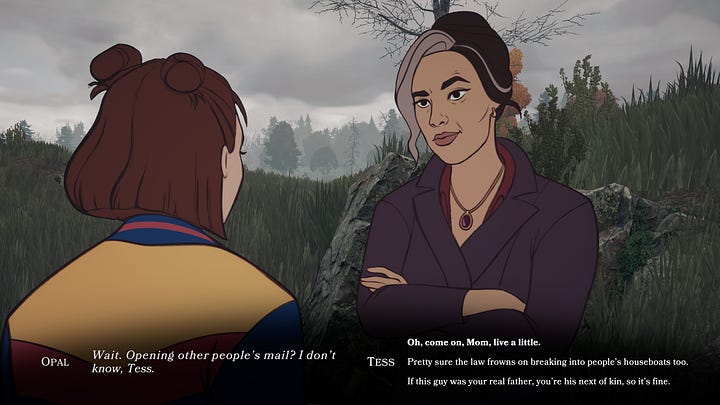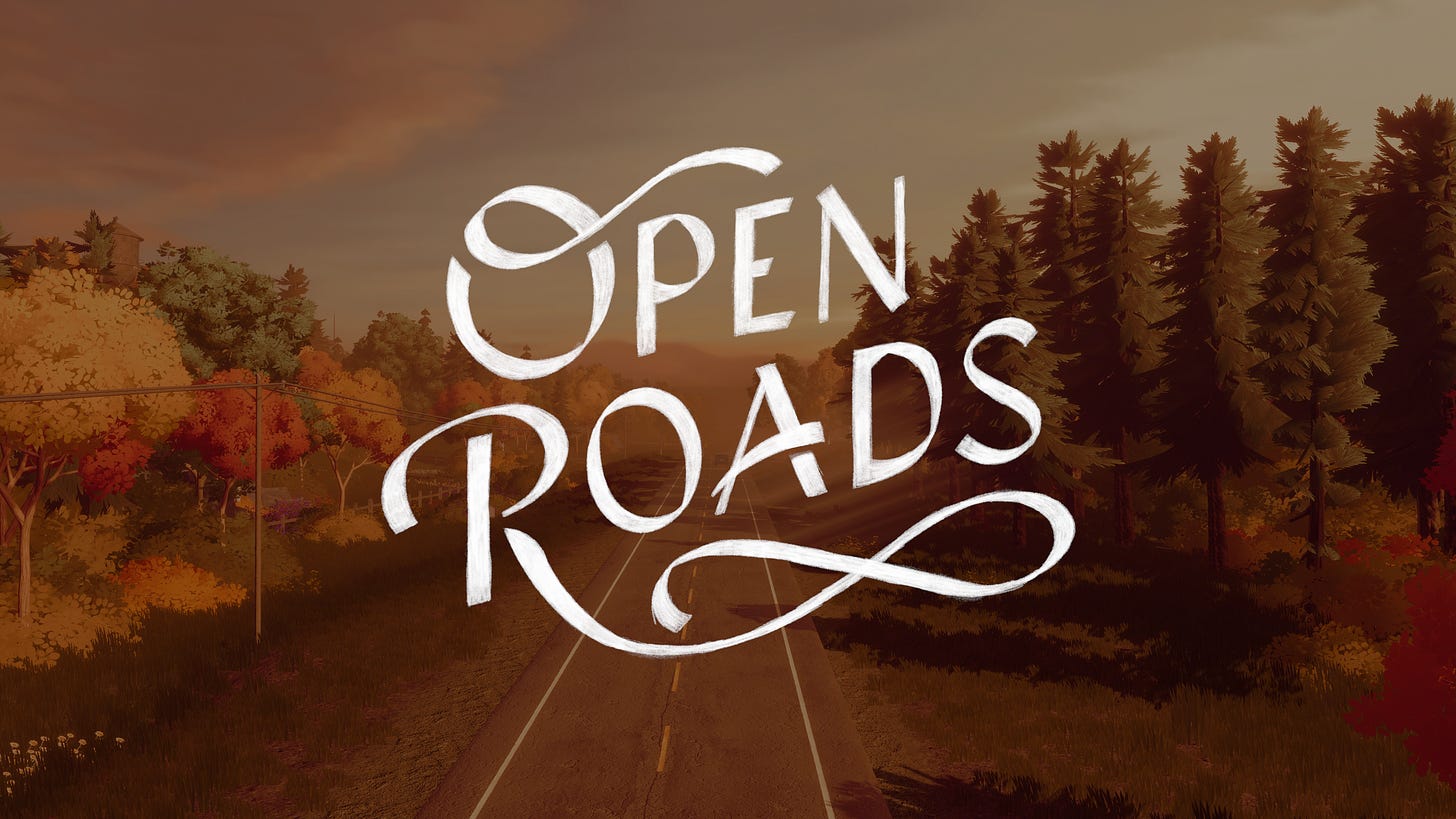The year is 2003. Flip phones are in. MapQuest is where you go if you want to get directions to where you want to go. 9/11 is still a fresh memory. Twitter and Facebook don’t exist yet. I turned seventeen in late 2003, so I’m just a shade older than sixteen-year-old Tess Devine, one of the main characters in Open Roads.
The game opens in the aftermath of a funeral; Tess has lost her grandmother Helen after an illness, and she and her mother, Opal, are losing the house where all three had lived. (Tess’s father is mostly out of the picture, having moved to Nevada after divorcing Opal, but Tess can text him at various times.)
While packing up the house, Tess and Opal discover a hidden compartment in the attic with a suitcase containing various trinkets, letters, and a diary, which brings up questions that can only be solved by hitting the open road. (I had to work that in somewhere, guys.) The Open Roads Team crafted environments that felt lived-in for the game, whether it was Helen’s pottery room filled with thrown pots and assorted tools, or the abandoned “summer home,” where Opal along with her sister, their father, and Helen spent time until his passing in the 1960s.
Searching through all the rubble and having to plan how to get past things like a dilapidated water heater or rotted stairs or no stairs made me think of all the times growing up when I’d crawl in and around all the rusted-out farm machinery in our grove to get away from my parents.




I’d be remiss if I didn’t talk about Kaitlyn Dever and Keri Russell. Dever is no stranger to portraying a teenager, but I’m glad she brought a different vibe to Tess than Eve in the television show Last Man Standing or Cassie Drake in the epilogue to Uncharted 4. She’s dealing with her own struggles; divorced parents, thinking about going to college or not, being homeless with her mother, and Dever brings a genuine enthusiasm to the role where you can’t help but laugh at some of the reactions to events in the game. Open Roads is Keri Russell’s first game, but you wouldn’t know it by her performance. When she talks to Tess and recalls moments of her life from when she was Tess’s age, there’s a wistfulness in her voice that adds so much character to the dialogue.
I do wish the game was just a bit longer, though. To tie up some of the threads left hanging at the end, I would have loved to see an epilogue with Tess and Opal, perhaps a few months or even a year after everything they found out, settled into a new home, or even just Tess in Nevada with her father, hearing his answers to what we learned about him during the game.





I did a lot of thinking during my short time with Open Roads; thinking about my time in high school in 2003, my contentious relationship with my mother and father, and how 2024 me is ultimately very proud of that girl.
It’s an Annapurna Interactive game through and through, though, with unique visuals, strong characters, and a compelling story. The Open Roads Team created an early 2000s throwback tale that fans of Gone Home and What Remains of Edith Finch will appreciate. Great for an afternoon or late-night run-through, hopefully, it’ll leave you with an appreciation for the quiet moments in life. With everything the team went through while at Fullbright, it’s a win we get to see this game at all.
Open Roads is available now on Xbox One and Xbox Series consoles, PlayStation 4 and PlayStation 5, Nintendo Switch, and PC. It’s also available through Xbox Game Pass. This review is based on the Xbox Series X version, which I purchased myself.







